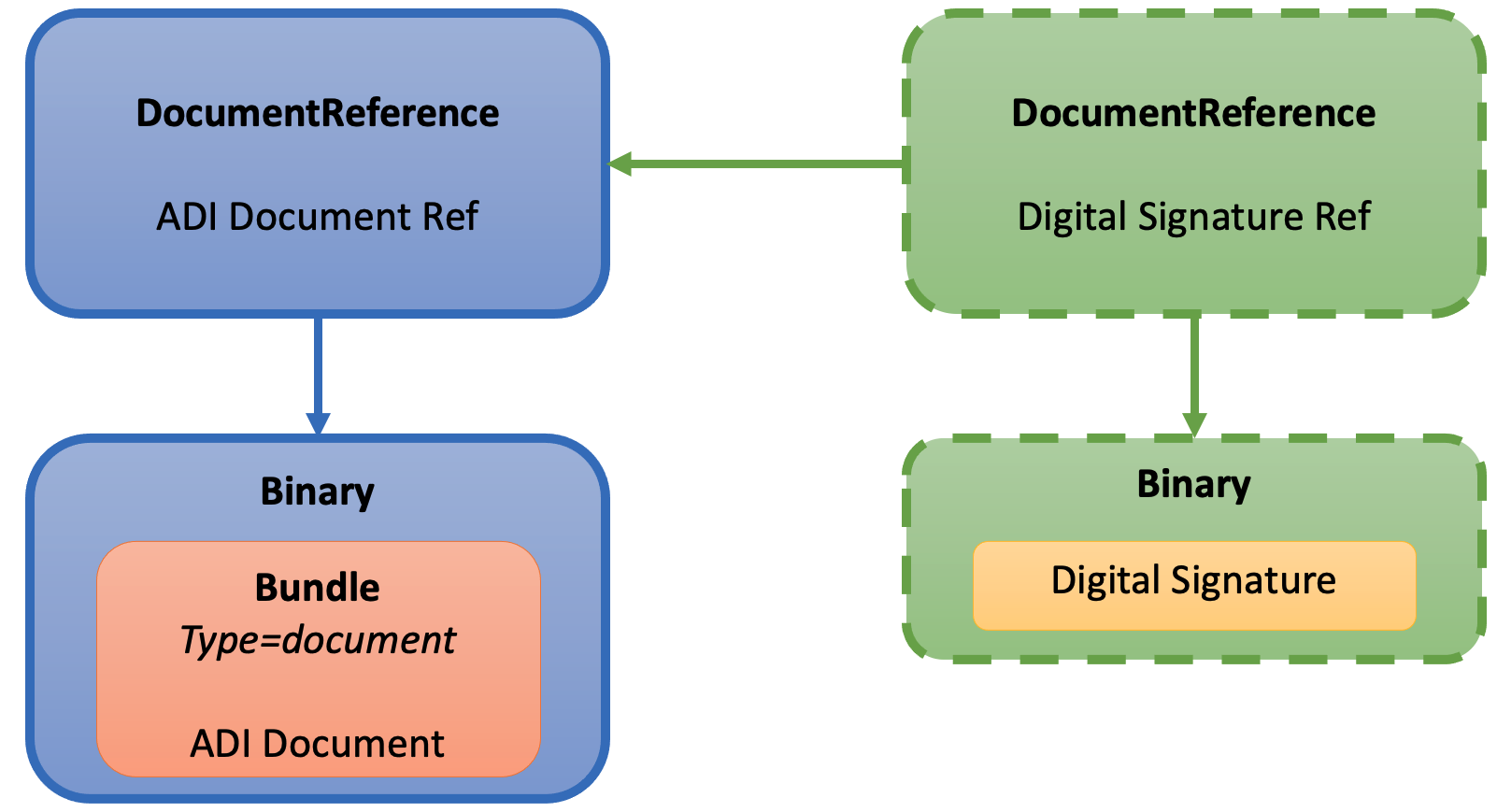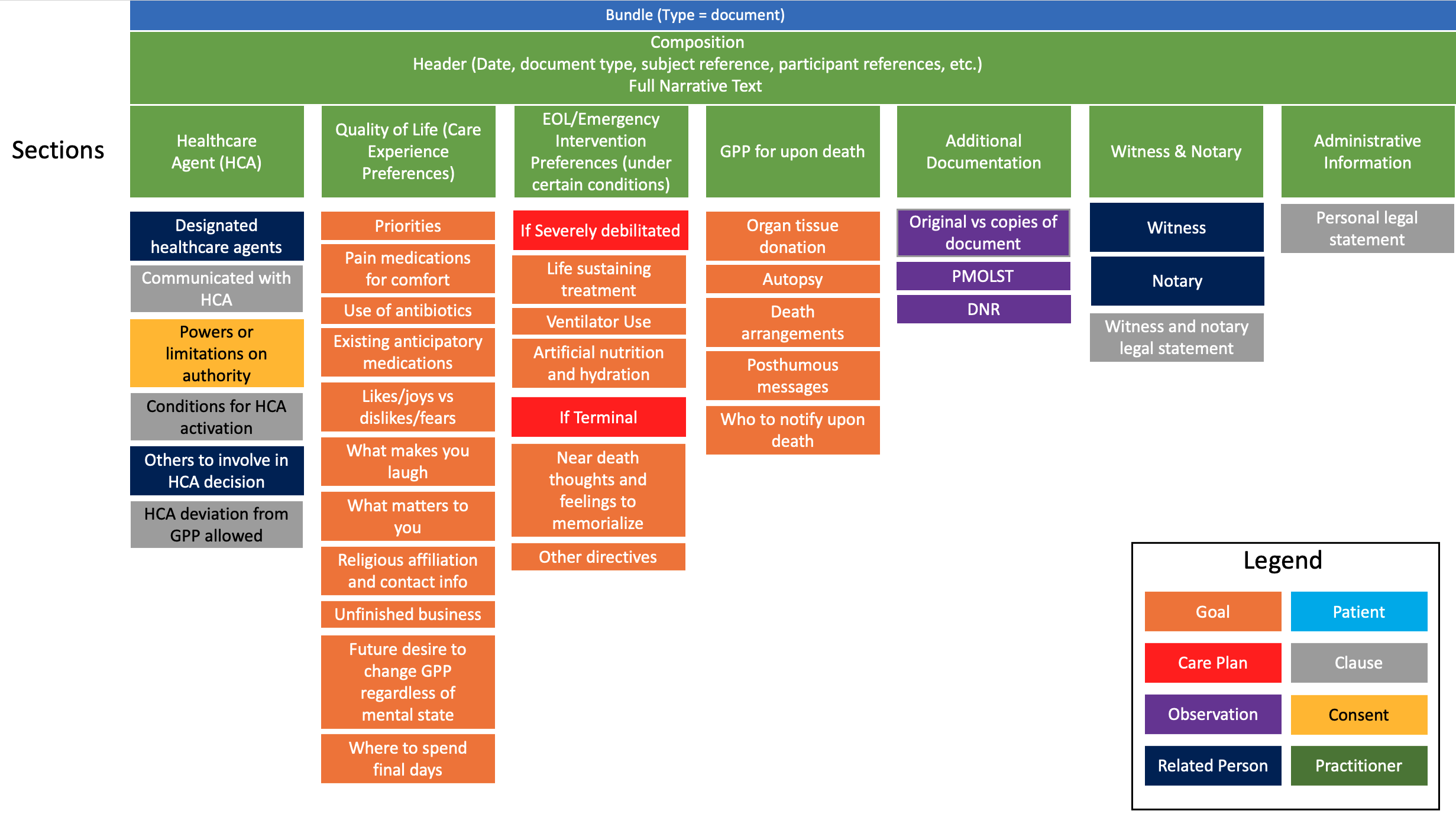This page is part of the PACIO Advance Directive Information Implementation Guide (v0.1.0: STU 1 Ballot 1) based on FHIR (HL7® FHIR® Standard) R4. The current version which supersedes this version is 1.0.0. For a full list of available versions, see the Directory of published versions
This section provides additional guidance on the relationship between the associated profiles and the structure of the advance directive document.
Advance directive documents may take several forms including scanned PDF documents, CDA documents and native FHIR documents. This guide defines interoperability to support any number of types, though focuses on native FHIR documents.
All documents, regardless of format is saved in the Binary resource and is available through the Binary endpoint. FHIR native documents SHALL be Bundle resources with type = document and encoded as a Binary resource. Documents that are communicated SHALL have at least one DocumentReference resource that references the Binary though the DocumentReference.content.attachment.url.
The DocumentReference is the resource that is used for “indexing” of documents and can be used for searching and finding documents with specific attributes such as type of document, subject, or dates.

Digital signatures are defined as optional in this guide. If supported, the digital signature will be a captured in a Binary resource that is referenced by an additional DocumentReference resource.
ADI FHIR native documents are instances of the Bundle resource with the type = document. The document should have all content contained within the Bundle with no external references except for the references to external documents in the DocumentationObservation.focus. FHIR Bundle documents consist or multiple entry resources within it, with the first entry being a Composition resource. The Composition resource acts as the header and organizational construct. It contains information about the document such as the category of document, dates, and references to the various participants of the document, as well as document sections used to categorize or organize the contains entries.
The Advance Directive Interoperability document defines 7 sections:

Advance directives documents often have additional information or clauses related to specific areas of the document. This may include things like additional information about the conditions under which a healthcare agent has been selected, whether a healthcare agent has been notified of or accepted their role as such, or other information that provides context to the data otherwise expressed in the sections or entries of a document. To support this information this guide has defined a [Clause extension] to all of the Composition sections and various profiles and elements.